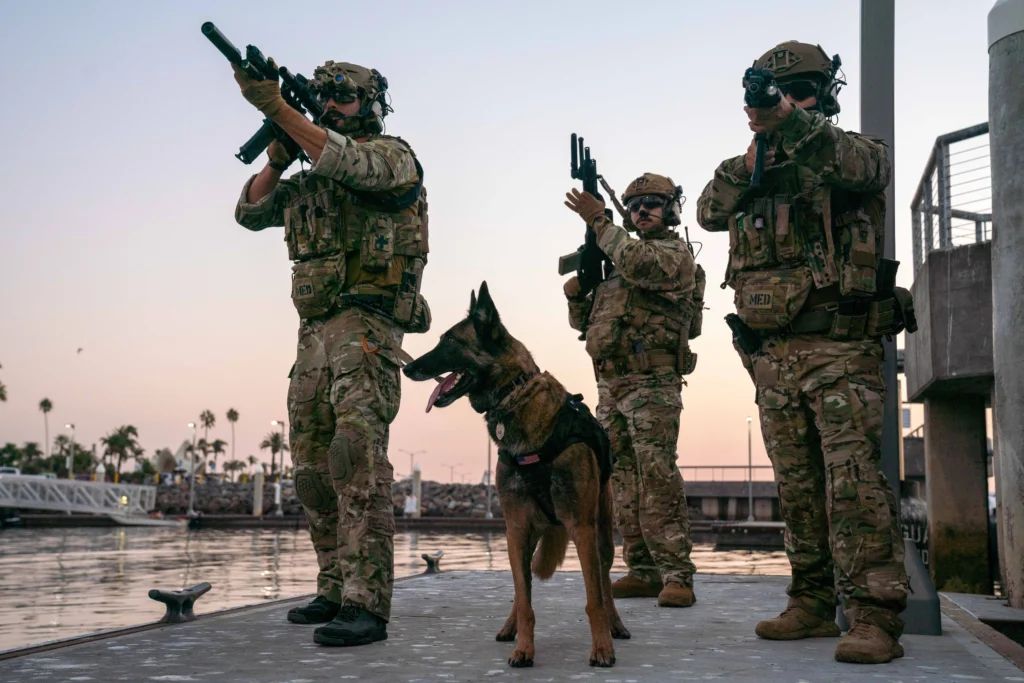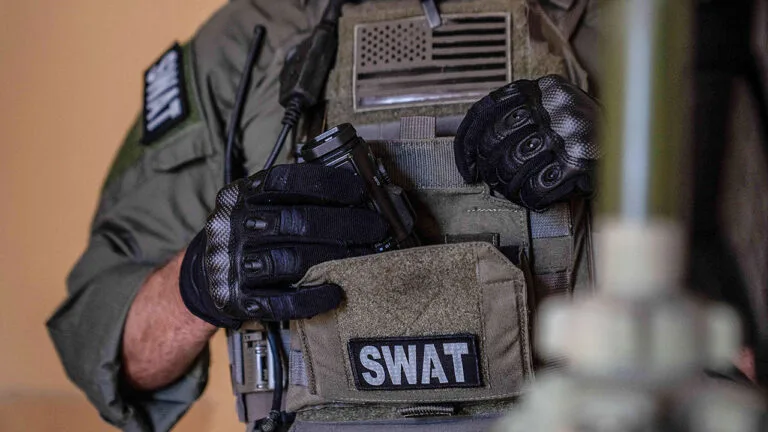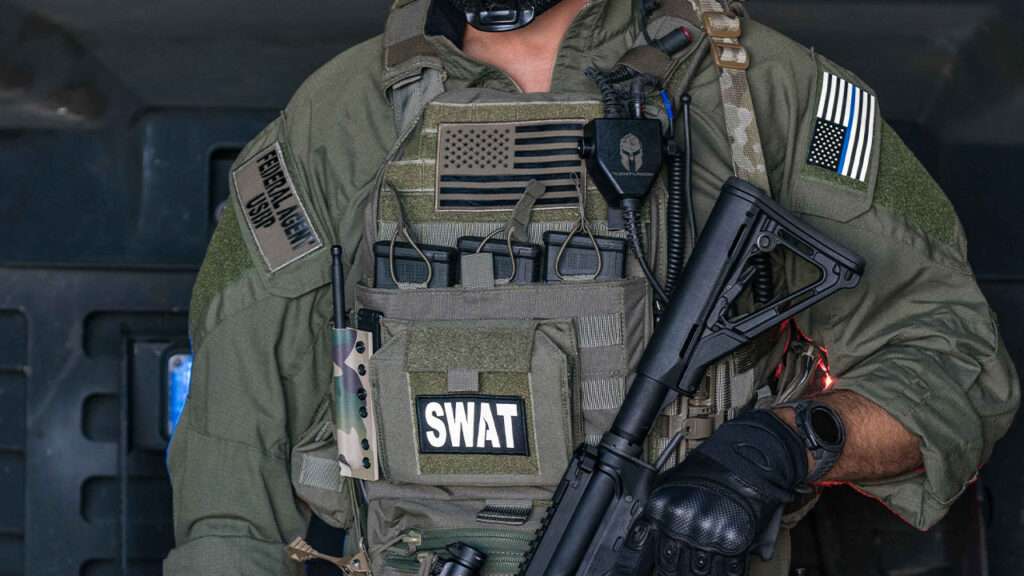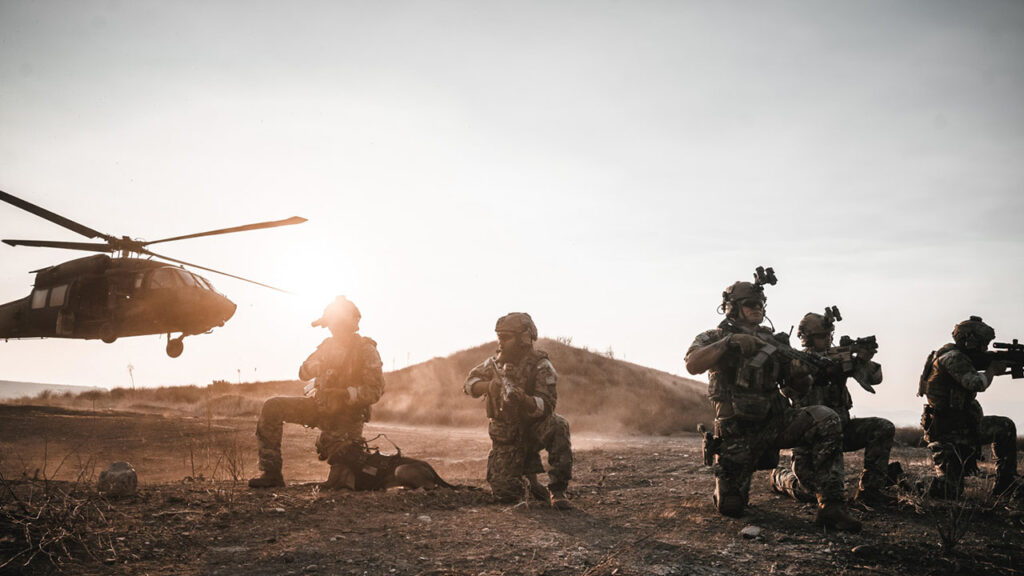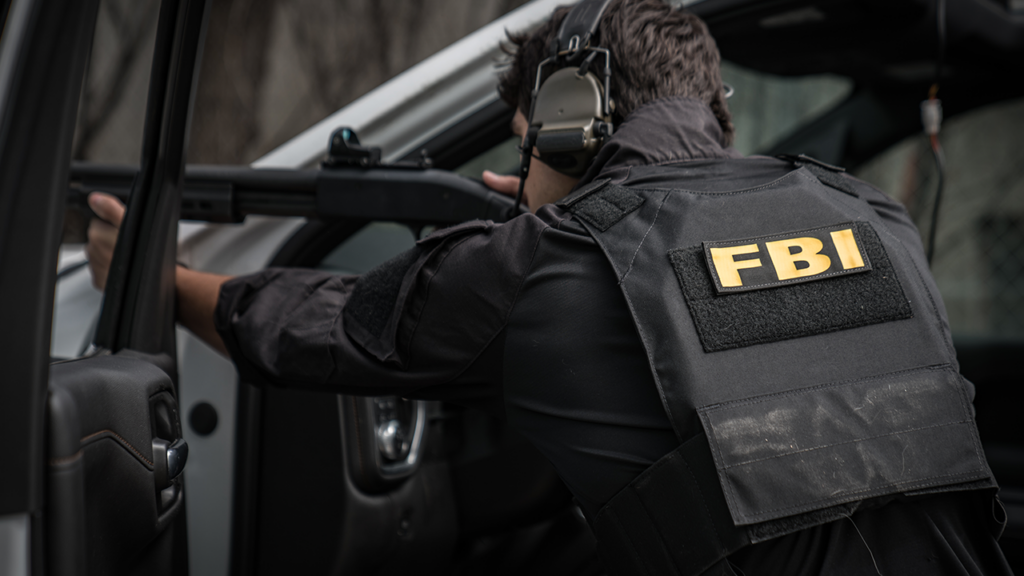The Pros and Cons of Steel Body Armor: What You Need to Know
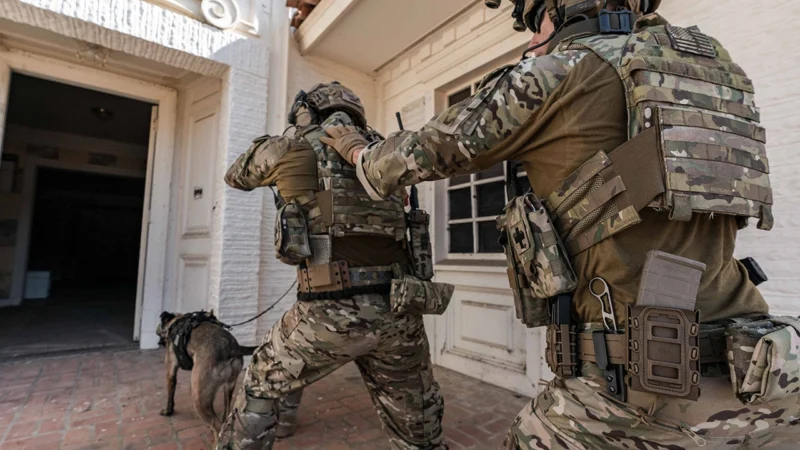
Let’s talk about Steel Body Armor
Table of Contents
When it comes to ballistic protection, choosing the right body armor is absolutely crucial. Steel body armor has been a popular choice for many in the MIL and LE due to its durability and reliability. In this article, we will explore the pros and cons of steel body armor to help you make an informed decision when shopping for armor plates.
Gear up with battle-ready protection and explore premium armor solutions at Chase Tactical now.
The Basics Of Steel Body Armor
Steel body armor is designed to protect against high-velocity projectiles. The plates provide coverage for vital areas such as the torso. They are usually made of a hard steel alloy, giving them a heavy-duty defense against many threats. Steel body armor is often worn in a plate carrier or as part of a larger loadout that includes other protective gear. It is available in various variants, generally named after resistance to multiple threats, such as the M193, M855, and M80 projectiles.
Steel body armor provides significant reinforcement against rifle rounds for shooters seeking greater coverage. It is often rated by level, such as Level 3, which indicates the level of protection it provides against certain types of ammunition.
Who Should Use Steel Body Armor?
It is solid armor made of steel if one requires serious protection from rifle fire. Military personnel, law enforcement, and security forces who anticipate hitting heavy-caliber rounds would do great with steel armor. This option is also an excellent choice when affordability and performance are required simultaneously since a level 3 rating can be achieved at a price that is generally lower than others.
Nevertheless, comfort, mobility, and light protection may be reserved for other options, such as ceramic or polyethylene body armor. In scenarios where security must be prioritized, the added weight and irritation associated with steel armor may be tolerated.
Advantages Of Steel Body Armor
One of the primary benefits of steel body armor is its exceptional strength. Steel body armor is capable of withstanding a wide range of ballistic threats, making it ideal for law enforcement and military personnel. Additionally, steel plates are highly durable and designed to endure repeated impacts without losing their protective capabilities. This ensures ongoing protection even after multiple hits. Furthermore, steel body armor is relatively cost-effective compared to other materials, offering long-term savings due to its longevity.
Affordable Price And Long Shelf Life
One of the outstanding advantages of steel body armor plates is their affordability and extended shelf life. For civilians and professionals alike, operating within a budget is crucial; steel armor works efficiently and provides a cost-effective option without compromising defense. Unlike other products like polyethylene plates, steel offers similar protection, particularly against handgun threats, without the higher price tag. Additionally, steel armor has a significantly longer shelf life—up to 20 years—compared to the typical 5-year lifespan of other body armor products. This longevity means you won't need frequent updates or replacements, making steel a more economical choice in the long run.
Extreme Durability
Steel body armor is known for its exceptional durability, especially compared to ceramic or polyethylene options. While ceramics can be brittle and prone to cracking, and polyethylene can degrade under extreme temperatures, steel remains resilient in various conditions. Steel ar1000 Level III armor's durability ensures no hidden weak points, providing reliable protection even in extreme environments.
Multi-Hit Protection
Steel armor is highly capable of withstanding multiple shots, offering a significant advantage over other materials like ceramic. Steel armor's ability to endure repeated impacts makes it a top choice in scenarios where multiple threats are anticipated. Its durability and composition ensure that the armor retains its protective capabilities even after several hits, providing peace of mind for those in high-risk situations.
Edge-to-Edge Protection
Steel body armor offers complete edge-to-edge protection, a key feature some other materials lack. For instance, the National Institute of Justice (NIJ) standards allow certain armor types less protection near the edges. However, with steel body armor, every inch of the plate, including the edges, provides ballistic protection, ensuring no vulnerable areas. This is particularly important for customers looking for comprehensive defense.
Low Backface Deformation (BFD)
Steel body armor has one of the lowest BFD levels among all types of body armor thanks to its rigidity. Backface deformation refers to the inward deformation of the armor plate after a bullet impact, which can cause injury. The NIJ .06 standards allow for up to 44mm of BFD, but steel armor stays well below this limit, minimizing the risk of internal injuries. It's recommended to use trauma pads in conjunction with steel plates for added protection, but even without them, steel's low BFD offers superior safety.
Drawbacks Of Steel Body Armor
Now, the bad. Despite its many advantages, steel body armor does have some drawbacks to consider. Addressing these pros and cons can help you make an informed decision about whether steel body armor is the right choice for your defense needs
Let's have a look at steel body downsides:
Heaviness
One of the main drawbacks of steel body armor is its weight. For individuals requiring lightweight options, especially when defending against rifle rounds, ar500 rifle armor plate may be preferable. While steel provides robust protection, the heaviness can be a downside for someone needing more mobility and less fatigue over extended periods.
Risk of Fragmentation
Another concern with steel body armor is the risk of fragmentation, also known as spalling. When a bullet impacts the steel plate, it disintegrates, causing fragments to scatter. Proper precautions, like using trauma pads and side plates, can help reduce the risk, ensuring a safer experience for the wearer.
Comparing Steel Body Armor vs Other Materials
When selecting different types of body armor, it’s important to consider the alternatives to steel. Ceramic plates, for example, are lighter and provide great protection against high-velocity rounds. They are also less susceptible to spalling. However, ceramic plates are more fragile, and may not withstand multiple hits, and neither can steel.
On the other hand, Aramid fiber-based body armor (like Kevlar) offers excellent flexibility and comfort. It is lightweight and has a high level of resistance against certain types of ammunition. However, aramid fibers are less effective against armor-piercing rounds than steel or ceramic plates.
Another notable option for comparing steel body armor to other materials is Ultra-High Molecular Weight Polyethylene (UHMWPE) based armor plates. UHMWPE plates have gained popularity due to their unique properties and advantages over traditional steel armor.
Take a look at the chart below with a comparison of aramid fibers with other high-performance fibers and hard materials, just to get an idea of the chemical advantage of these fibers over steel.
Take a look at the chart below with a comparison of aramid fibers with other high performance fibers and hard materials just to get an idea of the chemical advantage of these fibers over steel.
We must also note that a Steel Armor Plate is much stronger than a standard piece ASTM A36 Steel in order to meet Military Standards. This is just for reference. ASTM A36 steel and ASME SA36 steel measure between 119-159 on the Brinell Hardness (BHN) scale, while a Military grade Steel Armor Plate would measure in the 574 to 634+ BHN range.
Table: Comparison of aramid fibers with other high-performance fibers
Material | Strength to weight Ratio (KN.m/kg) | Density g/cm3 |
Spectra fiber (UHMWPE) | 3619 | .97 |
Kevlar (ARAMID) | 2514 | 1.44 |
Carbon Fiber | 2457 | 1.75 |
Carbon laminate | 785 | 1.5 |
E Glass Fibre | 1307 | 2.57 |
E Glass laminate | 775 | 1.97 |
Polypropylene | 89 | .91 |
S Glass Fibre | 1906 | 2.47 |
Spider Silk | 1069 | 1.3 |
Balsa axial load | 521 | .16 |
Steel alloy ASTM A36 | 254 | 7.8 |
Aluminum alloy | 222 | 2.63-2.8 |
Oak | 87 | .75 |
Epoxy | 26 | 1.23 |
Nylon | 69 | 1.15 |
Force per unit area at failure / Density = is the Strength to Weight ratio of this material. Kevlar is very strong and is slightly stronger than Carbon Fiber per unit weight.
Source: https://textilelearner.net/aramid-fibers-types-properties-manufacturing-process-and-applications/
Ultimately, the choice between steel body armor and other materials depends on your specific needs and circumstances.
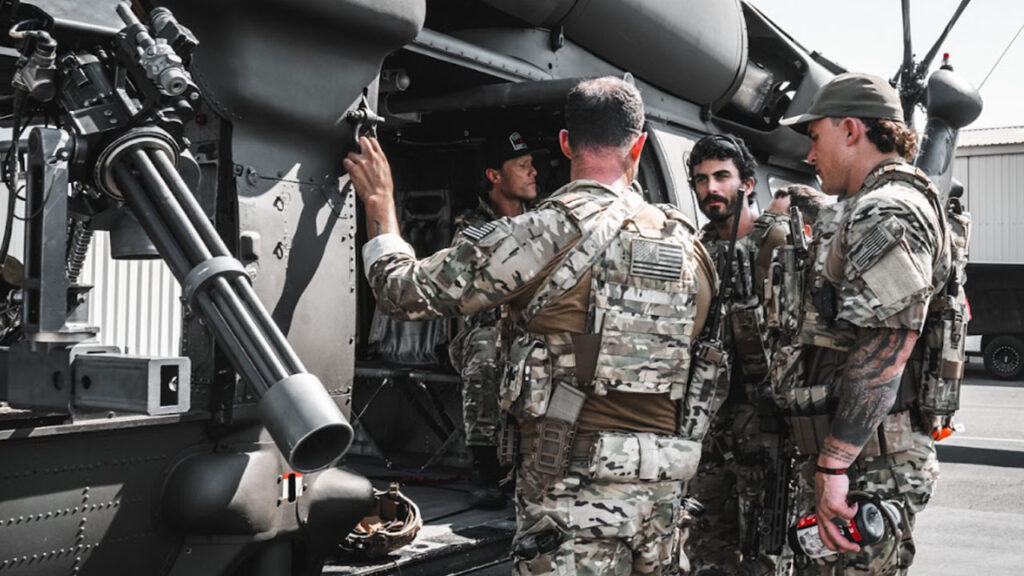
Common Misconceptions about Steel Body Armor
- One common misconception is that steel plates are impenetrable. While steel is highly resistant to many types of ammunition, Steel Plates are not completely bulletproof. Nothing is. We must understand the limitations of steel body armor and select the appropriate protection for the specific threats you may encounter.
- Another misconception is that steel armor is outdated and ineffective. That is simply not true. With advancements in body armor technology and manufacturing processes, modern steel body armor has evolved to provide enhanced protection and durability, making it a viable option for many individuals seeking reliable ballistic protection.
Maintenance and Care for Steel Body Armor
To ensure the longevity and effectiveness of your steel body armor, proper body armor maintenance and care are crucial.
- Regularly inspect your plates for any signs of damage or wear.
- Clean the armor using a mild detergent and water, avoiding harsh chemicals that could degrade the protective coating.
- Store your armor in a cool, dry place away from direct sunlight to prevent deterioration.
Additionally, it is important to follow the manufacturer’s guidelines for replacing your steel plates.
Testing and Certification Standards for Steel Body Armor
When purchasing steel body armor, it is important to look for armor that meets rigorous testing and certification standards. The National Institute of Justice (NIJ) in the United States provides a comprehensive set of standards for body armor testing. Look for armor that has been certified to meet or exceed these standards to ensure its effectiveness and reliability.
In addition to NIJ standards, other international standards organizations such as the European Union’s CEN and the German Institute for Standardization (DIN) also provide testing and certification guidelines for body armor. Consider armor that meets these standards for added assurance of quality and performance.
Frequently Asked Questions
How long does steel body armor last, and does it require replacement?
Steel body armor has an impressive shelf life of up to 20 years, far exceeding the 5-year lifespan of other materials like ceramic or polyethylene. This extended durability means you won't need to replace steel armor as frequently, making it a cost-effective option in the long run. However, it's essential to regularly inspect the armor for any signs of wear or damage and ensure that any anti-spall coatings are intact to maintain optimal protection.
Is steel body armor safe from spalling and fragmentation risks?
While steel body armor is incredibly durable, it does carry a risk of spalling or fragmentation. When a bullet strikes the steel plate, it can break into fragments that may injure the wearer. To mitigate this risk, many steel plates are coated with anti-spall materials designed to capture these fragments. Additionally, using trauma pads and side plates can further reduce the risk of injury. When properly equipped, steel armor can provide robust protection with minimized fragmentation risks.
What makes steel body armor a reliable choice for combat equipment?
Steel body armor is a durable and cost-effective insert option for tactical vests. Its rigid panels offer excellent protection against common threats in the field. Many multi-curve designs are now available to improve comfort and mobility, making them suitable for prolonged use in various combat environments.
Are there any issues with using steel armor panels in different countries?
Yes, some countries have regulations or restrictions on the ownership or export of steel armor panels. Additionally, issues such as increased weight compared to composite inserts and potential spall (fragmentation) risks are important considerations. Always ensure your equipment complies with local laws and is properly paired with spall liners and carrier vests.
Shop Chase Tactical Steel Armor in Stock
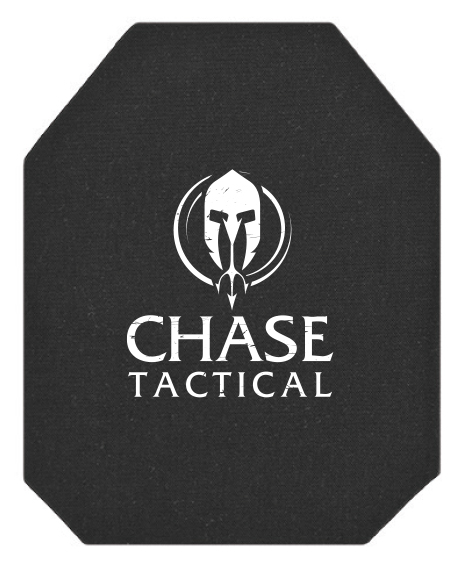
Chase Tactical AR500 Steel Armor Plate
Chase Tactical AR500 Rifle Armor Plate Level III+ Stand Alone NIJ 0101.06 Certified + RHINO EXTREME COATING

Chase Tactical AR1000 Steel Armor Plate
Chase Tactical AR1000 Level III+ Stand Alone Rifle Armor Plate NIJ 0101.06 Certified + RHINO EXTREME COATING

